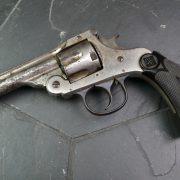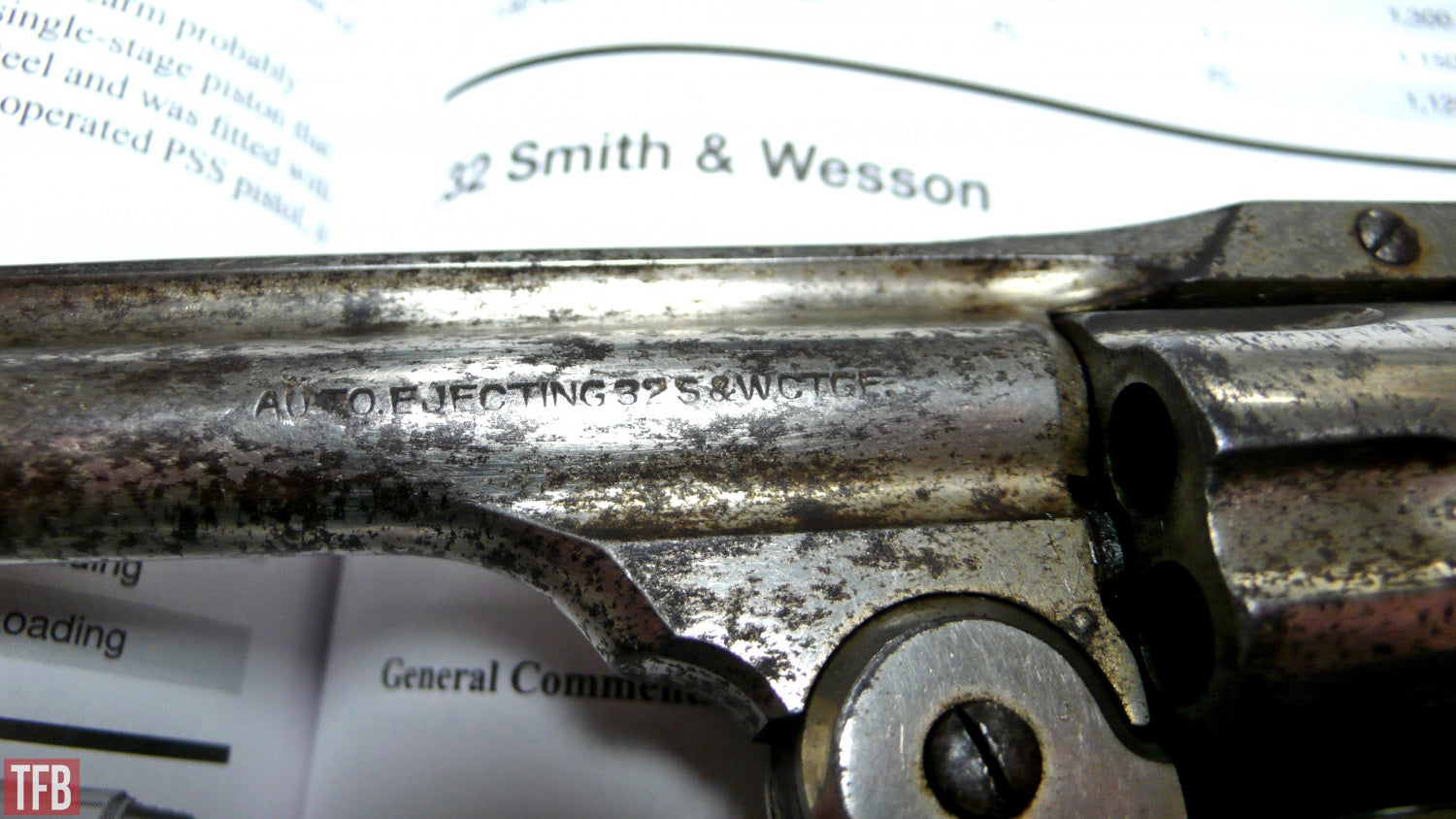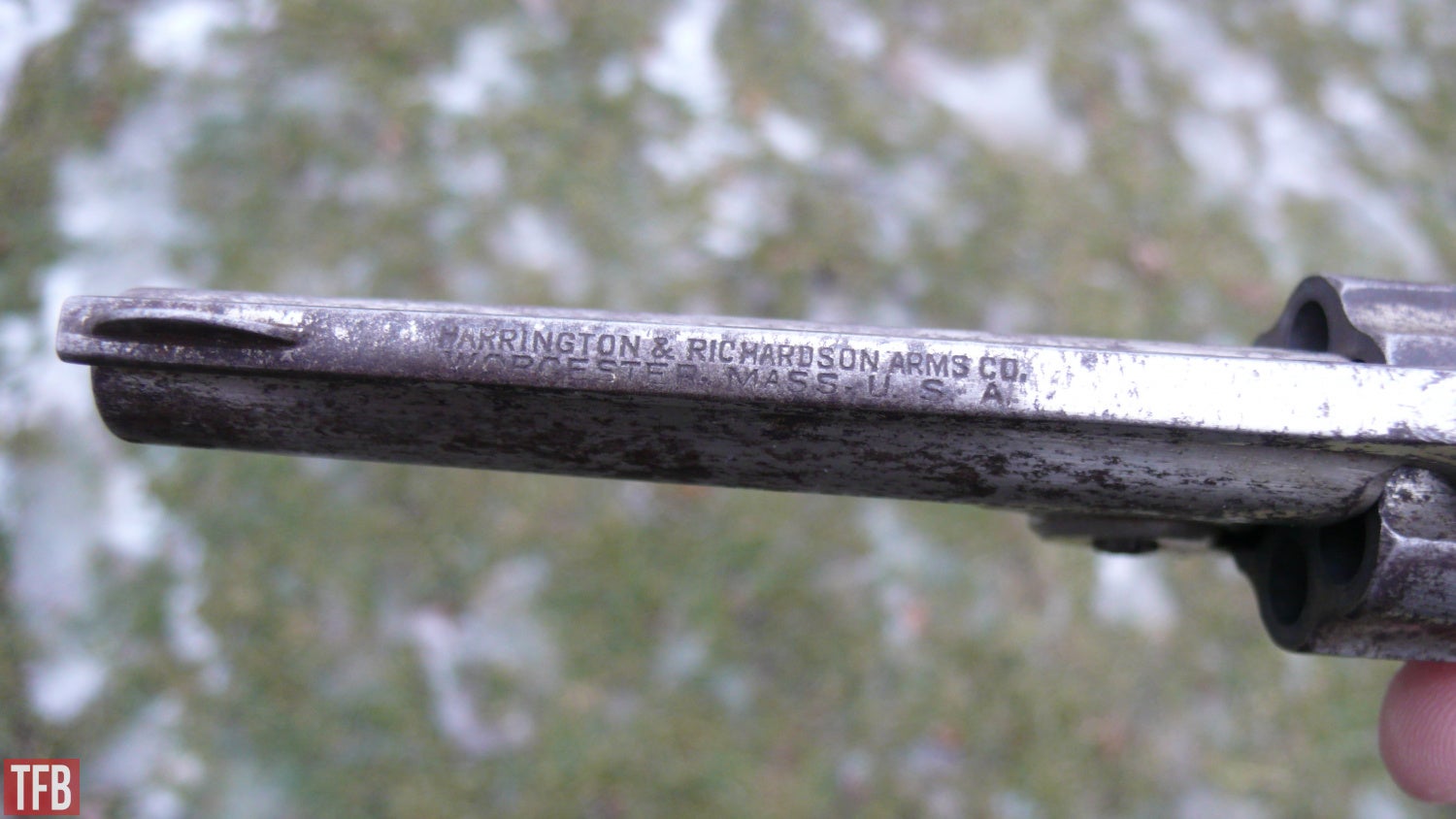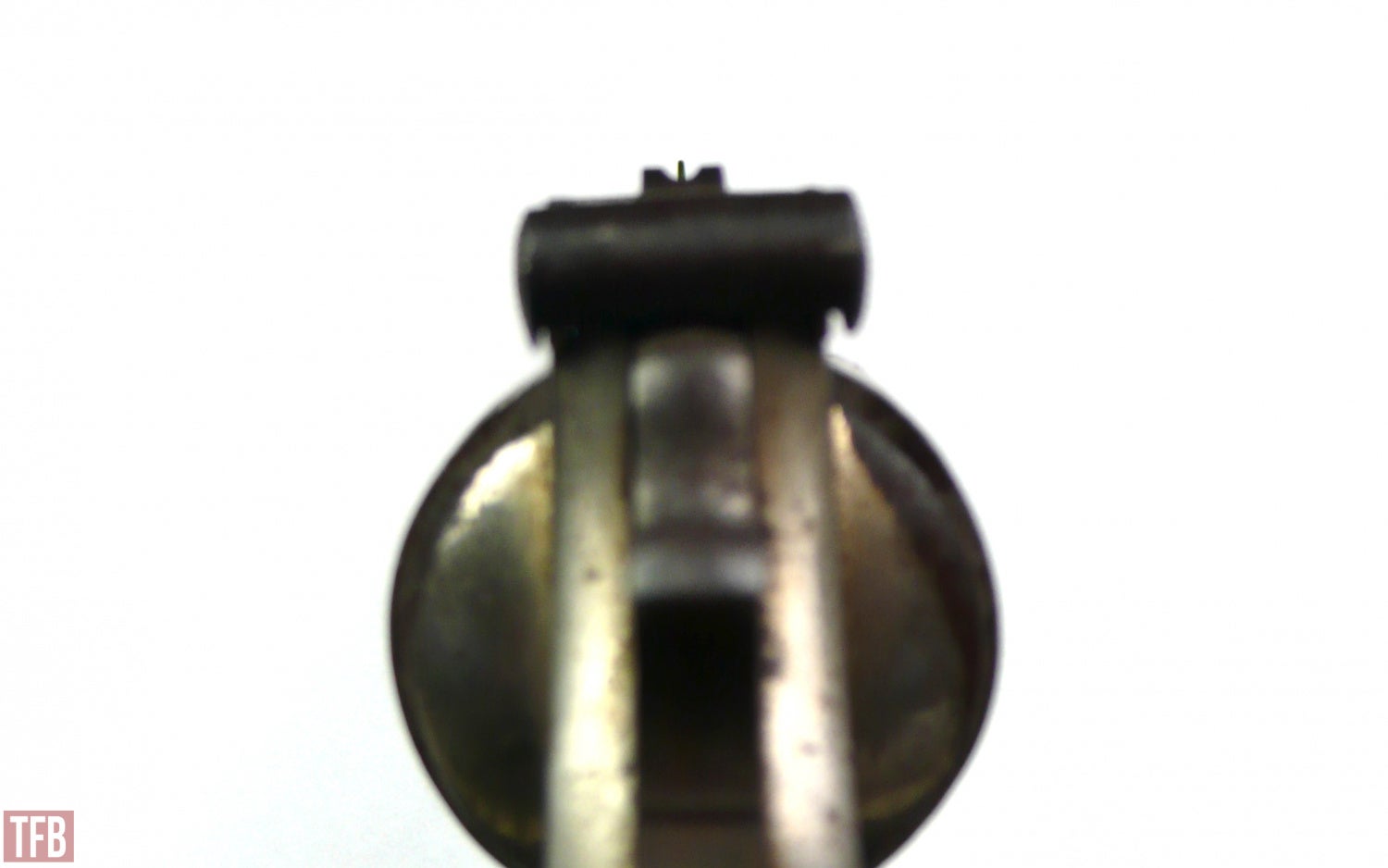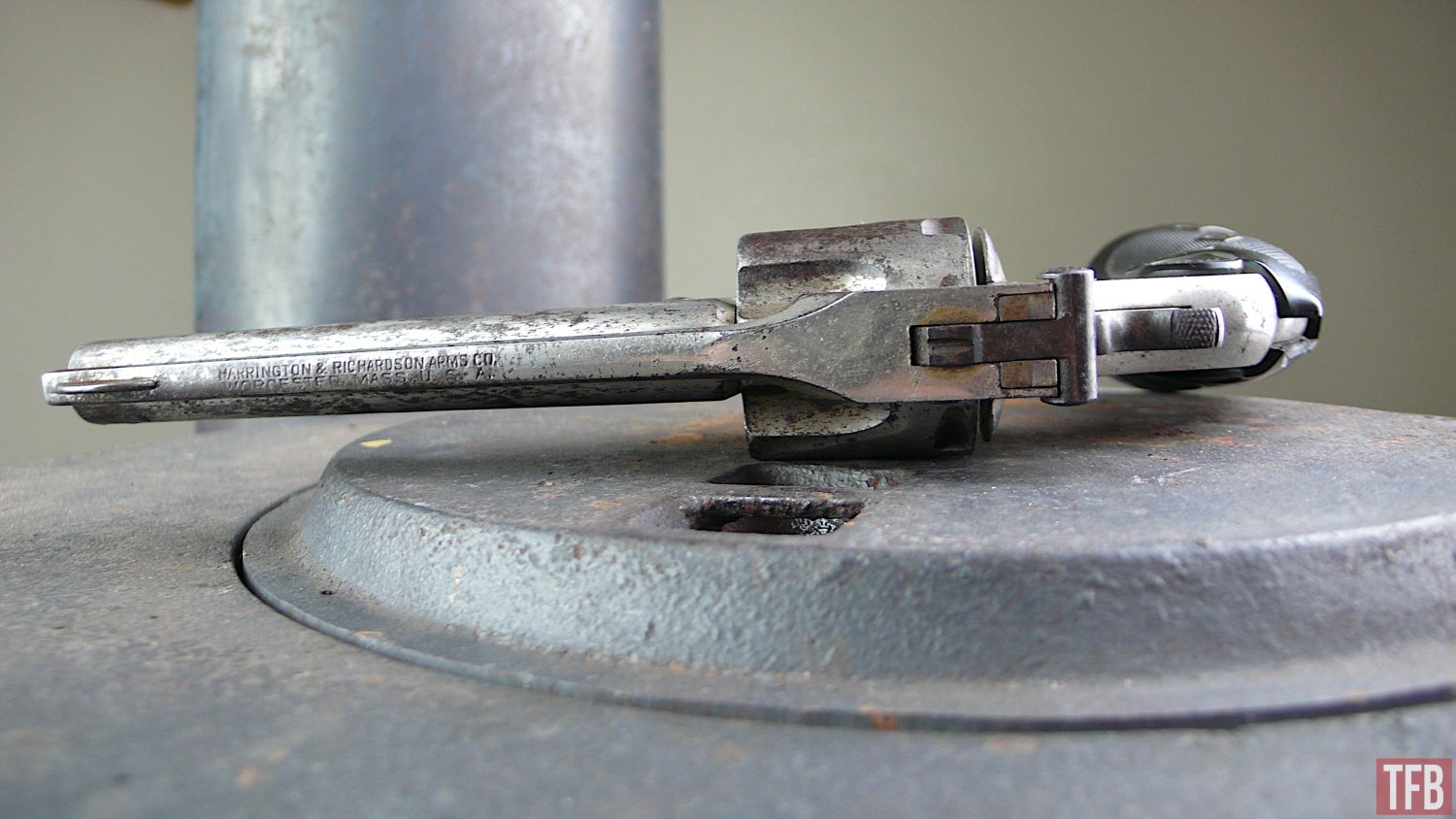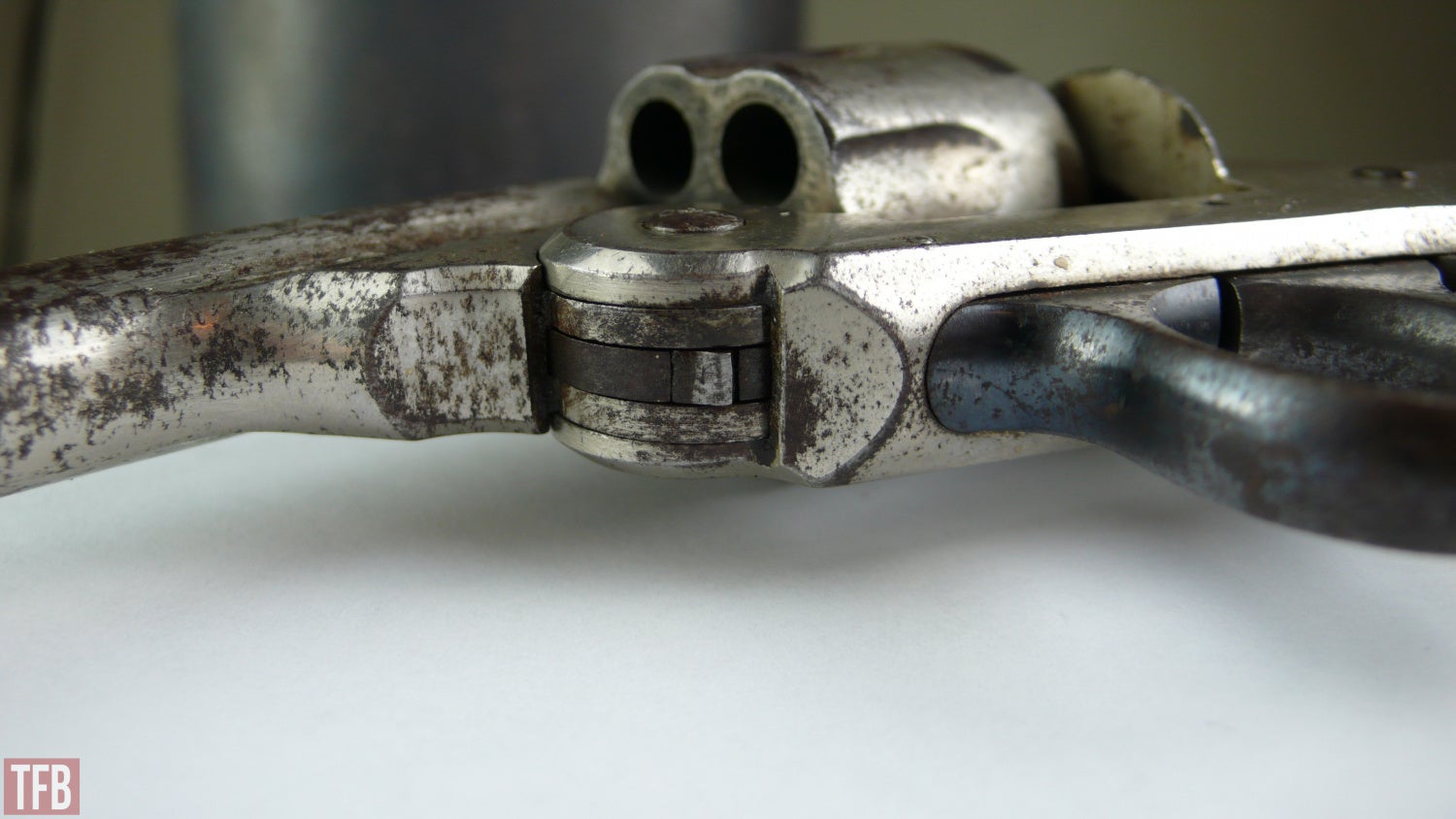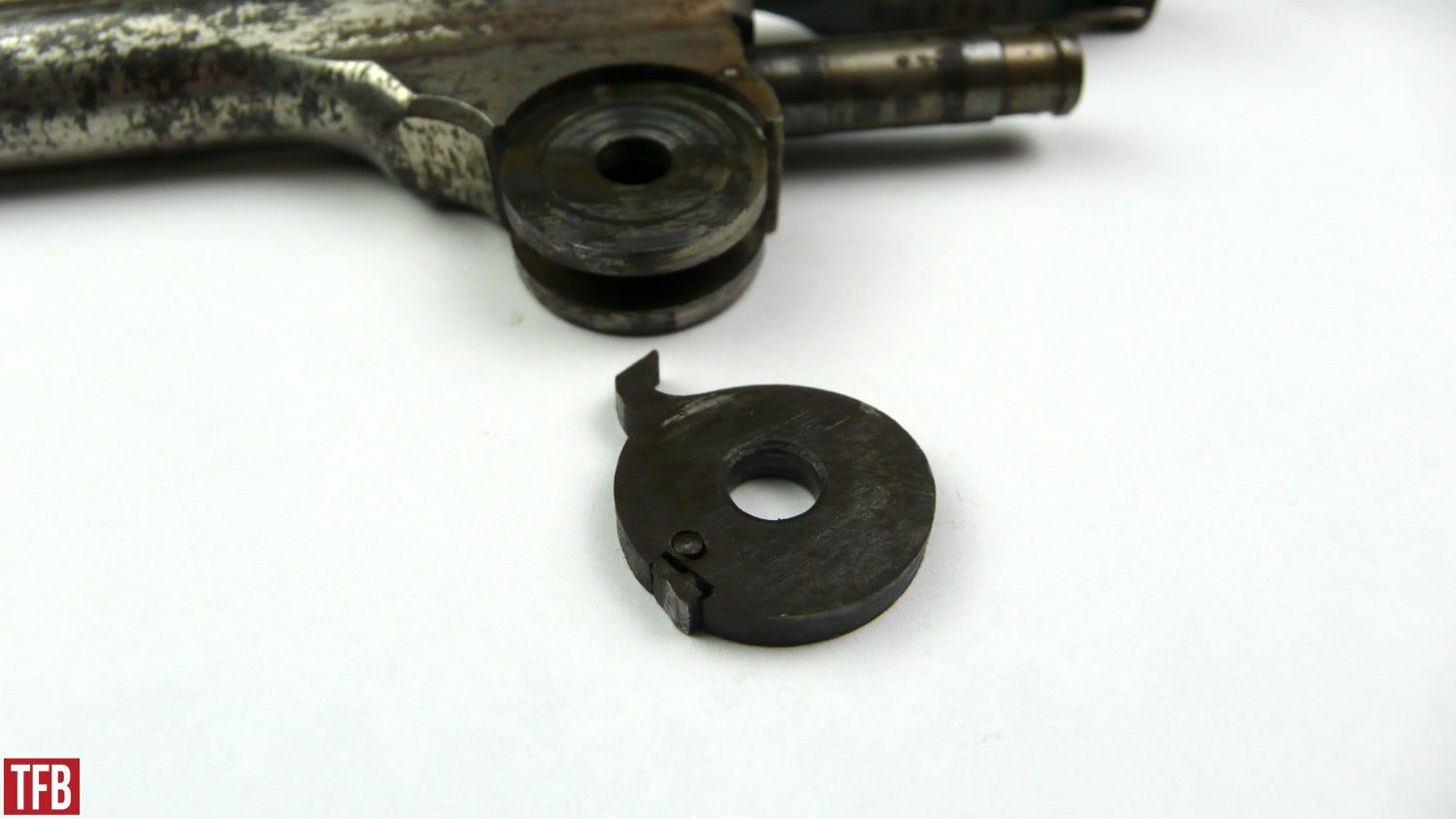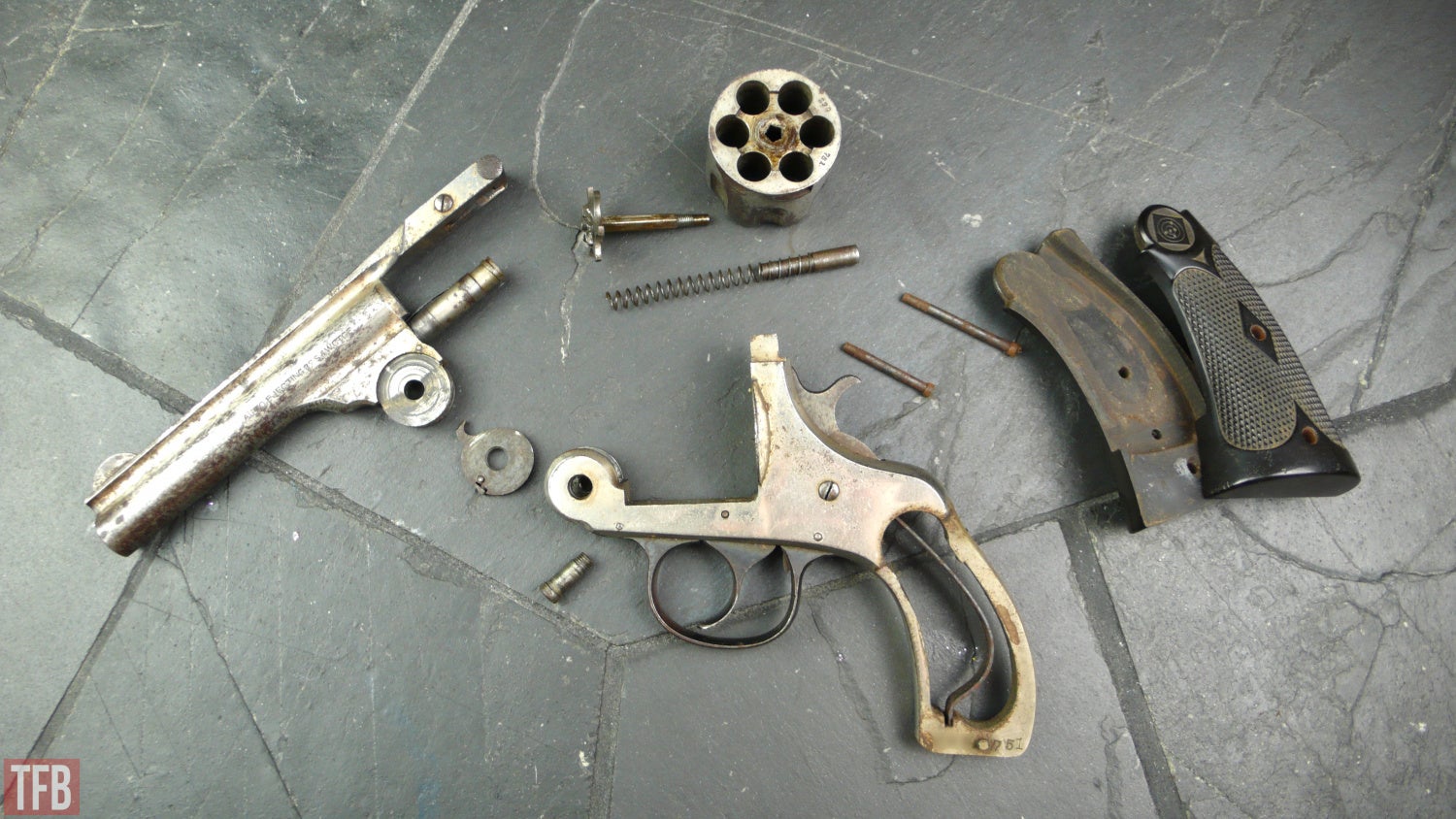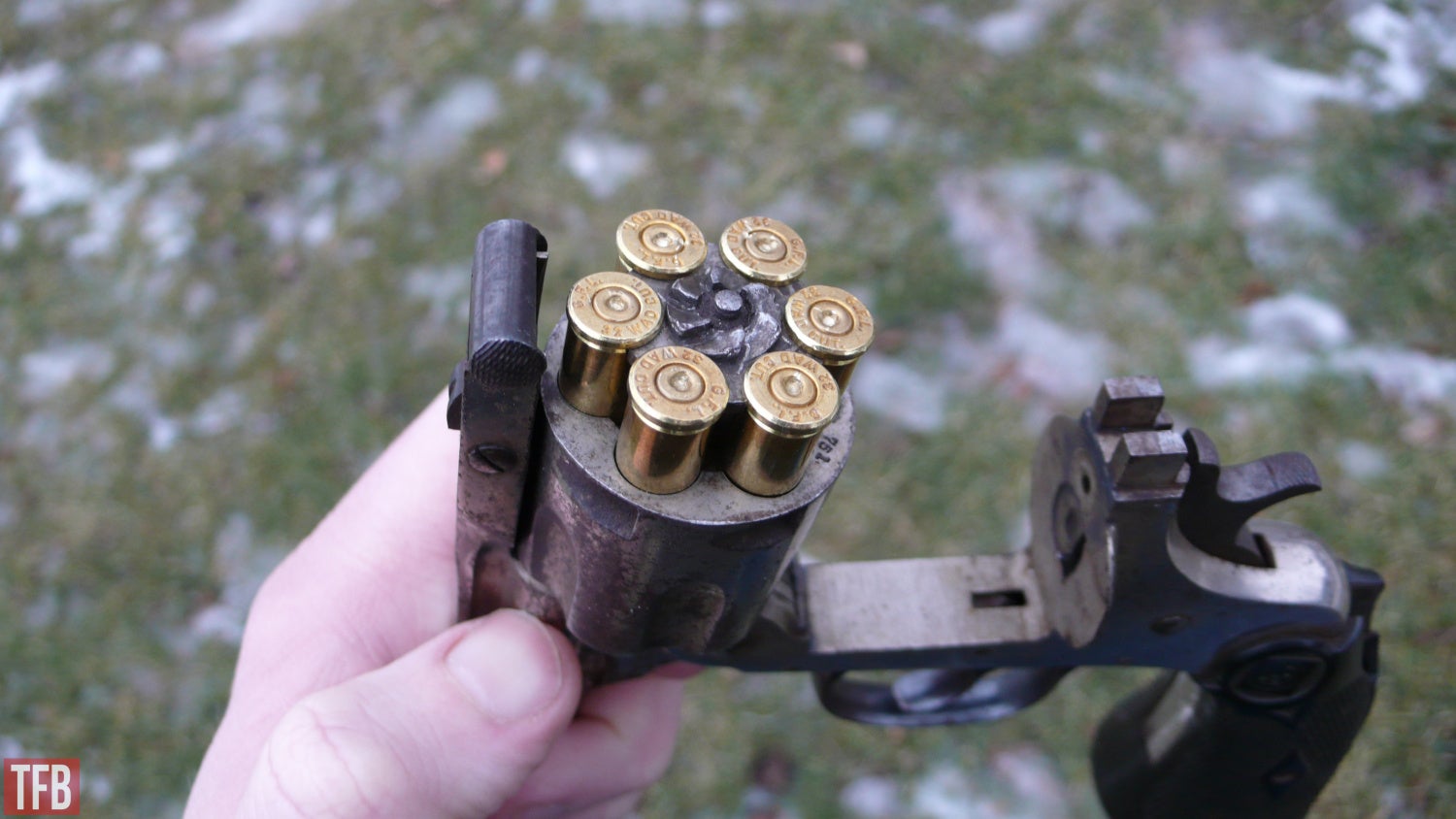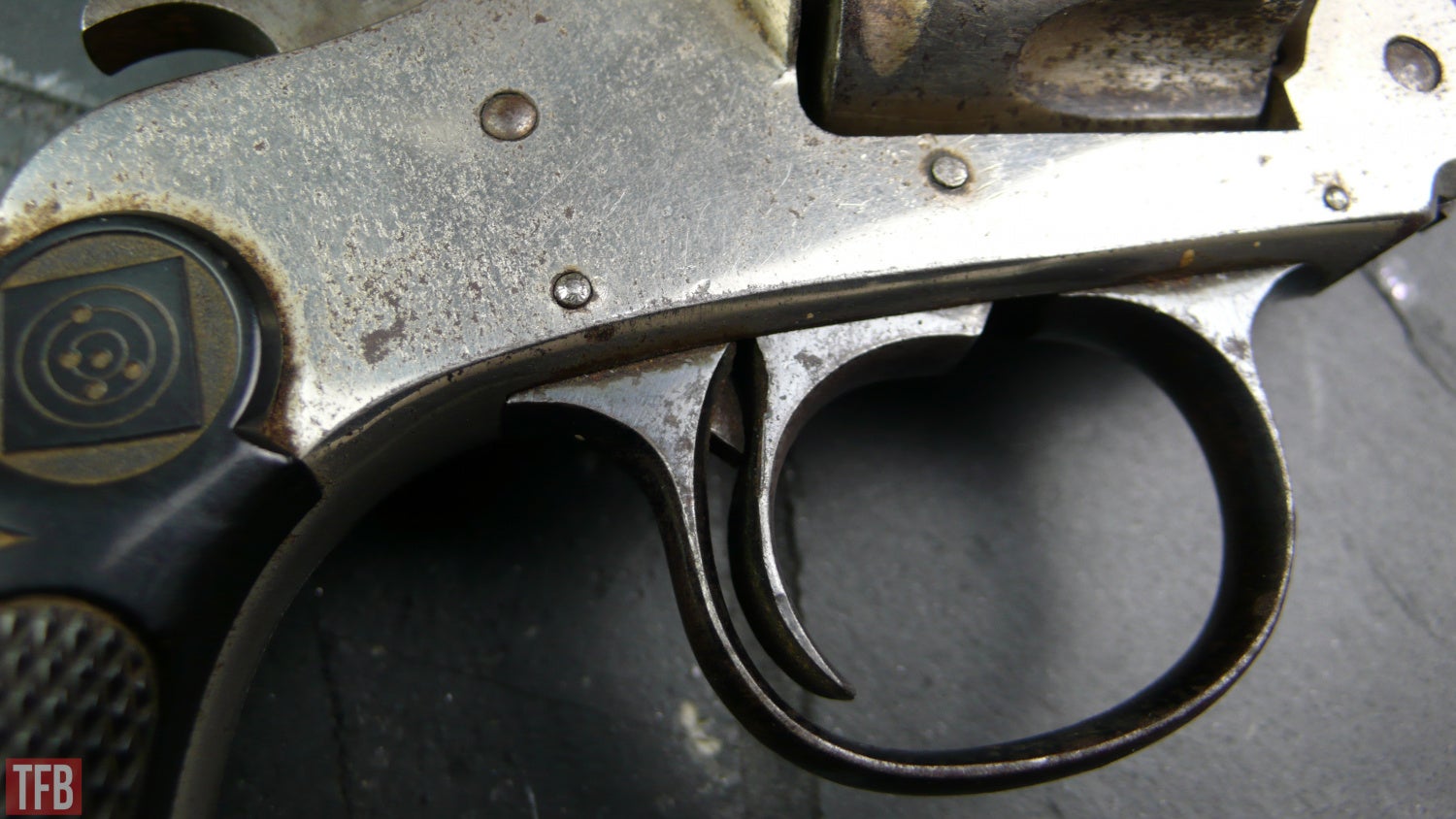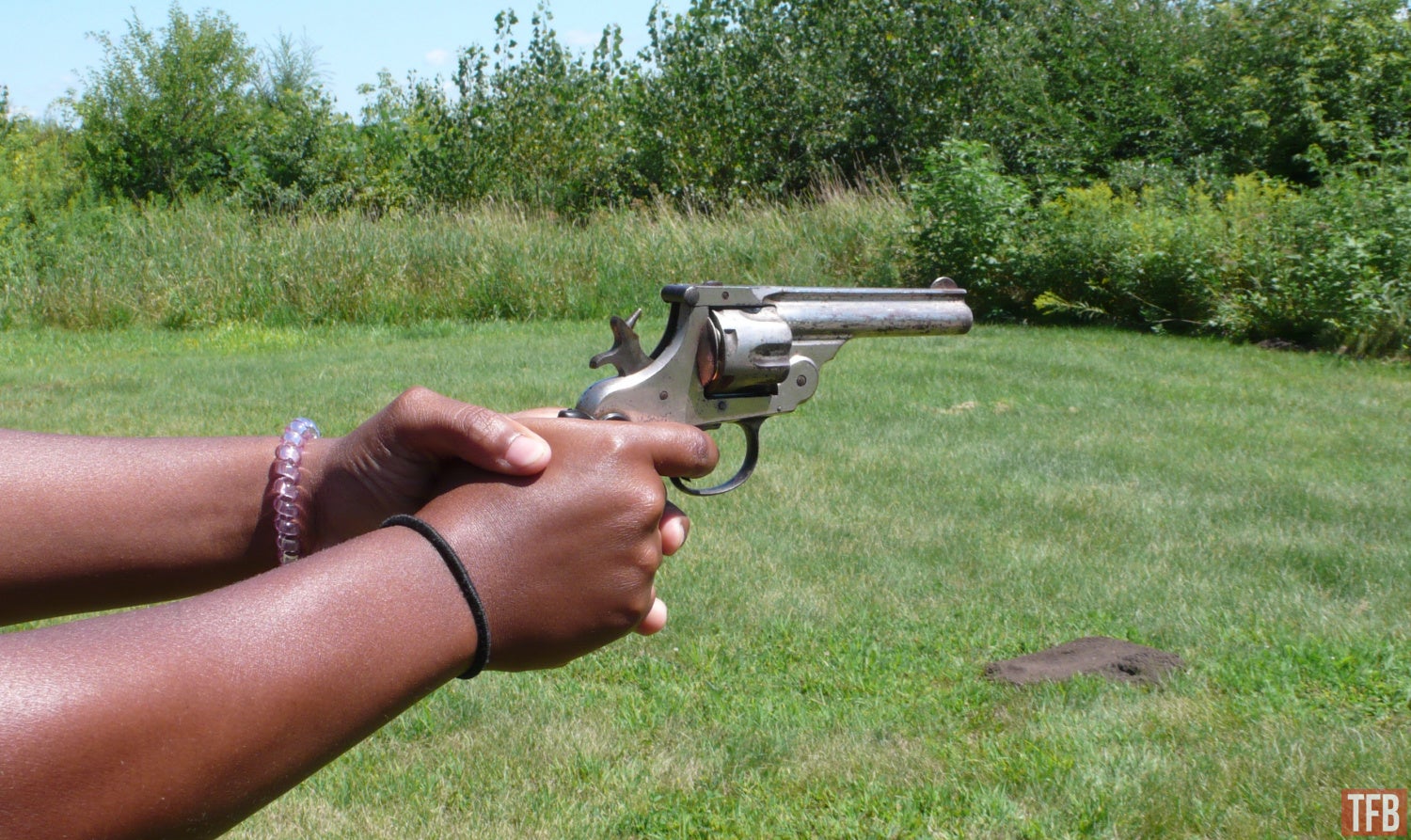At a local firearm auction last year, I acquired a Harrington & Richardson Auto Ejecting revolver chambered for the .32 S&W cartridge for the lowest winning bid of the day. These top-break revolvers never really caught my eye, but I was willing to scratch that itch, and who knows, maybe even have some fun with it and make some noise. Let’s see how this H&R Auto Ejecting top-break revolver fared on this week’s TFB Wheelgun Wednesday.
Wheelgun Wednesday @ TFB:
- Wheelgun Wednesday: SHOT 2023 Revolver Roundup
- Wheelgun Wednesday: SHOT Show 2023 Wheelgun Wishes
- Wheelgun Wednesday: A Glimpse At Revolvers Used In Crimes
- Wheelgun Wednesday: 2022 Recap Of Revolvers & Gear
This particular H&R Auto Ejecting revolver (the third such model from H&R) was manufactured between 1896 and 1940, however, my own guess is that it was likely made somewhere in the mid to latter half of that run. The current market for the H&R Auto Ejecting Top-Break revolvers is staggeringly affordable, with most prices ranging between $80 to $150. I happened to score this model for a $10 bid, plus a $40 transfer fee, so I happened to find an incredibly low-demand pocket of the market when this went up for auction. I’ll certainly cover the positive aspects of this revolver, but there are several factors that I attribute to the low cost.
SIGHTS
Mind you, as a late Gen X’er, the biggest leaps in handgun sight design have happened during my lifetime, so I’ll admit that I’m a bit biased when I say that the sights on the H&R Auto Ejecting revolvers are terrible. They’re incredibly tiny and hard to pick up unless aiming at something bright. I think it’s fair to point out that the sights, as designed were more appropriate for the shorter 2.5-inch and 3.25-inch barrel lengths, which made for better pocket guns at the time, but the target models could’ve had something a bit better. However, the worn nickel finish could contribute to the dark front sight.
OBSOLETE CALIBERS
I’m not going to cite Harrington & Richardson for their choice of chamberings for the Auto Eject revolvers, although I’d say that those options, or lack thereof 100 years later, are hard to track down, and potentially expensive, thus adding to the lack of demand for these old wheelguns. As of this writing, AmmoSeek.com listed options for all four calibers that H&R endowed their Auto Ejecting revolvers in, with 50 rounds of .38 S&W and .32 S&W Long (Colt New Police) hovering around $27, while .32 H&R Magnum sat at $42 for 20 rounds.
I had read some H&R Auto Ejecting Top-Break owners say that the 6-shot models chambered for .32 S&W would also accept .32 S&W Long / New Colt Police, so I measured the chambers and found this to be true. I was pretty pleased that my model accepted .32 S&W Long, since the standard .32 S&W wasn’t even available for quite some time, but when it was available, a box of 50 rounds was listed for a staggering $120!
AUTO EJECTing revolver
The auto ejecting feature has been fun to see in action. The center ejector lever that works on the star ejector has a small ramp that catches on the frame as the barrel is swung downward. Internally, on the other end of the lever, is an arm that pushes the star upward as the barrel comes down. Once the ramp is met by the barrel assembly, the lever gives way and the ejector star drops back into the cylinder, sending the empty cases on their merry way, allowing fresh cartridges to be inserted.
Even though my gun can chamber and fire the .32 S&W Long just fine, the auto ejector is still only designed to completely eject standard .32 S&W cartridges, so my Longs would get stuck every time I went to eject them. I didn’t mind that much since it’s just a gun to have fun with at the range, but a full dispersal would’ve been satisfying.
I trimmed one of the .32 S&W Long cases to the plain-jane .32 S&W length, which is a difference of about 0.31 inches. The much shorter case ejected just fine and spat out onto the floor.
SHOOTING THE H&R AUTO EJECTING REVOLVER
Interestingly, the sear is exposed between the trigger and trigger guard, and it is tripped by the trigger bumping into it. I actually like the simplicity in that fact. My makeshift trigger scale showed a pretty consistent break at 11 pounds for double action, and about five pounds for single action. Despite the outward appearance of my H&R Auto Ejecting revolver, the trigger maintains a smooth travel, but the last bit of trigger pull seems to take more energy than necessary.
When the hammer is at rest, the firing pin continues to protrude through the frame, but fortunately, there’s a quarter-cock position that the shooter can manually engage for safer carrying. I’ve read of some accounts where people would rotate the cylinder so that the protruding firing pin would sit between two cartridges rather than have it resting on a primer. While having the firing pin resting between two cartridge rims was pretty secure, it seemed to take a bit more muscle to work the double action. If I were going to carry this (I’m not), I would opt for the quarter-cock position of the hammer.
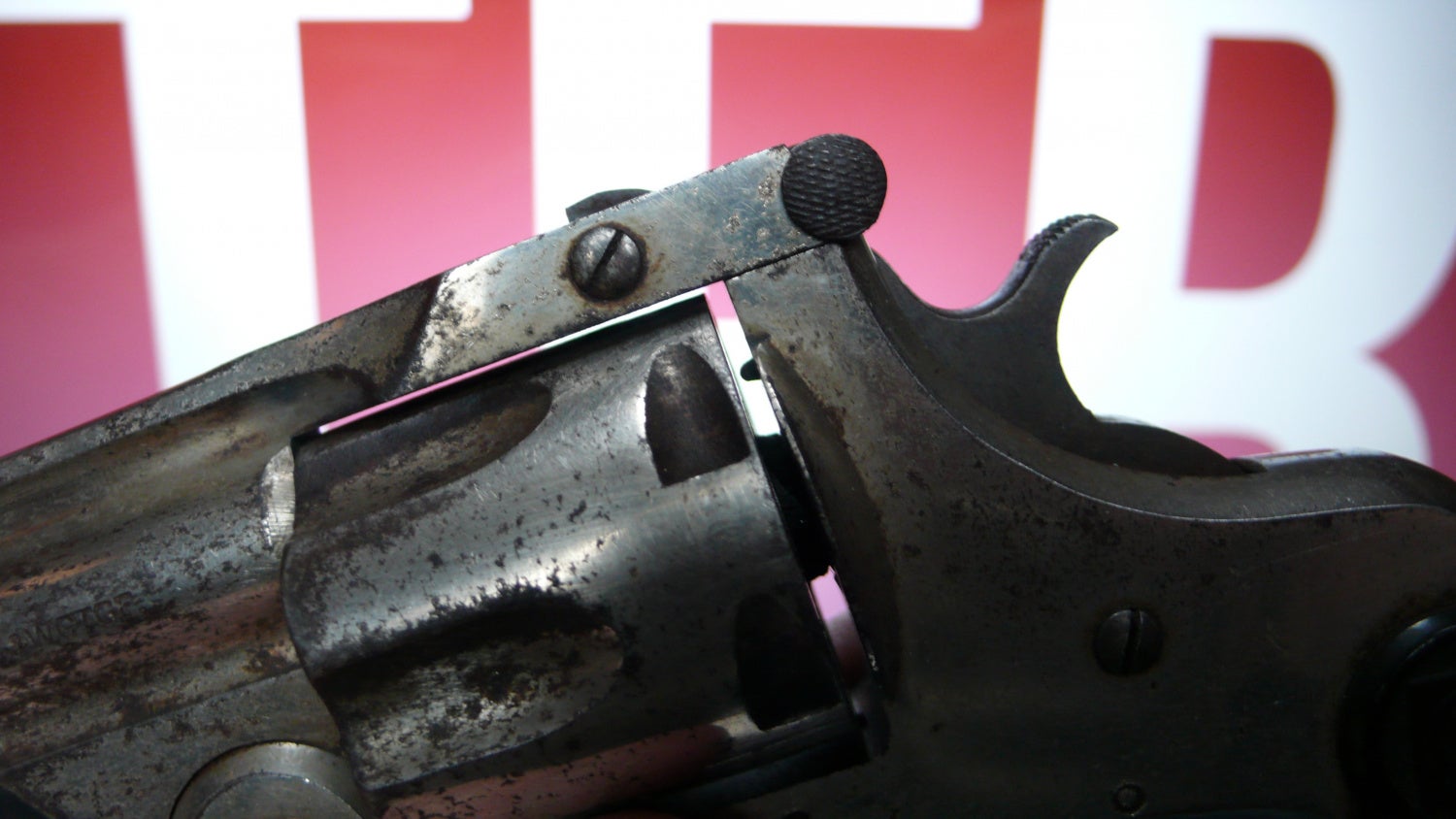
Firing pin at rest, protruding through the frame.
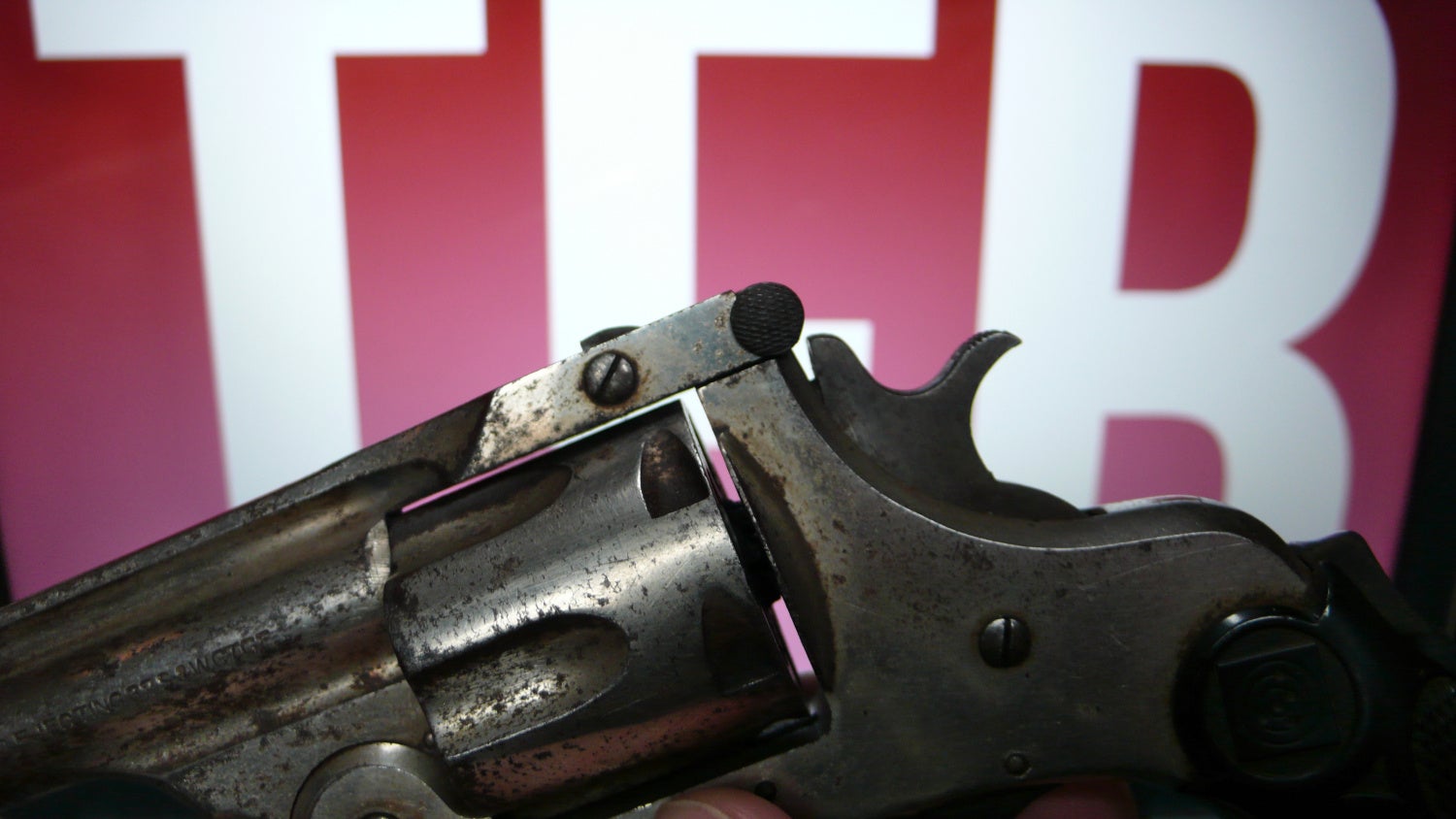
Hammer at quarter-cock.
The H&R top break has a cylinder stop, however the machining in the cylinder only stop it from moving one way, so I was a bit nervous about the chambers lining up, but my dry fire testing looked like it would be okay, and there wasn’t any evidence of misaligned chambers when we went hot on the range. I found that when closing the barrel assembly, I’d sometimes have to adjust the cylinder since the hand was finicky about how the ratchet was aligned. For me it just added to the quirkiness of the H&R Auto Ejecting revolver, but I could tell my daughter wasn’t enjoying the learning curve as much. Aside from that though we enjoyed shooting it.
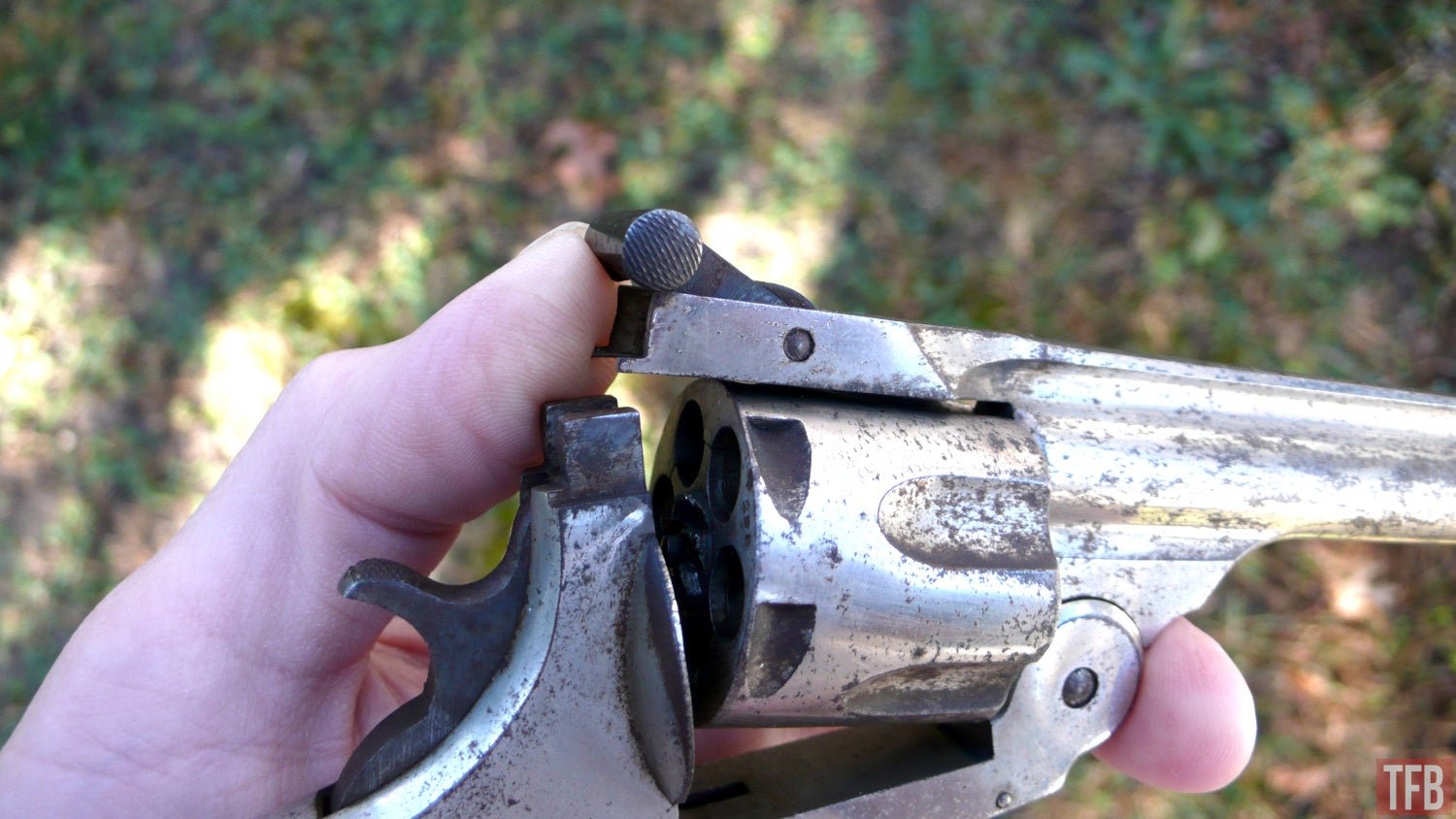
The rear sight is part of the barrel assembly’s lock, you can see the two verticle lugs where the lock latches on to.
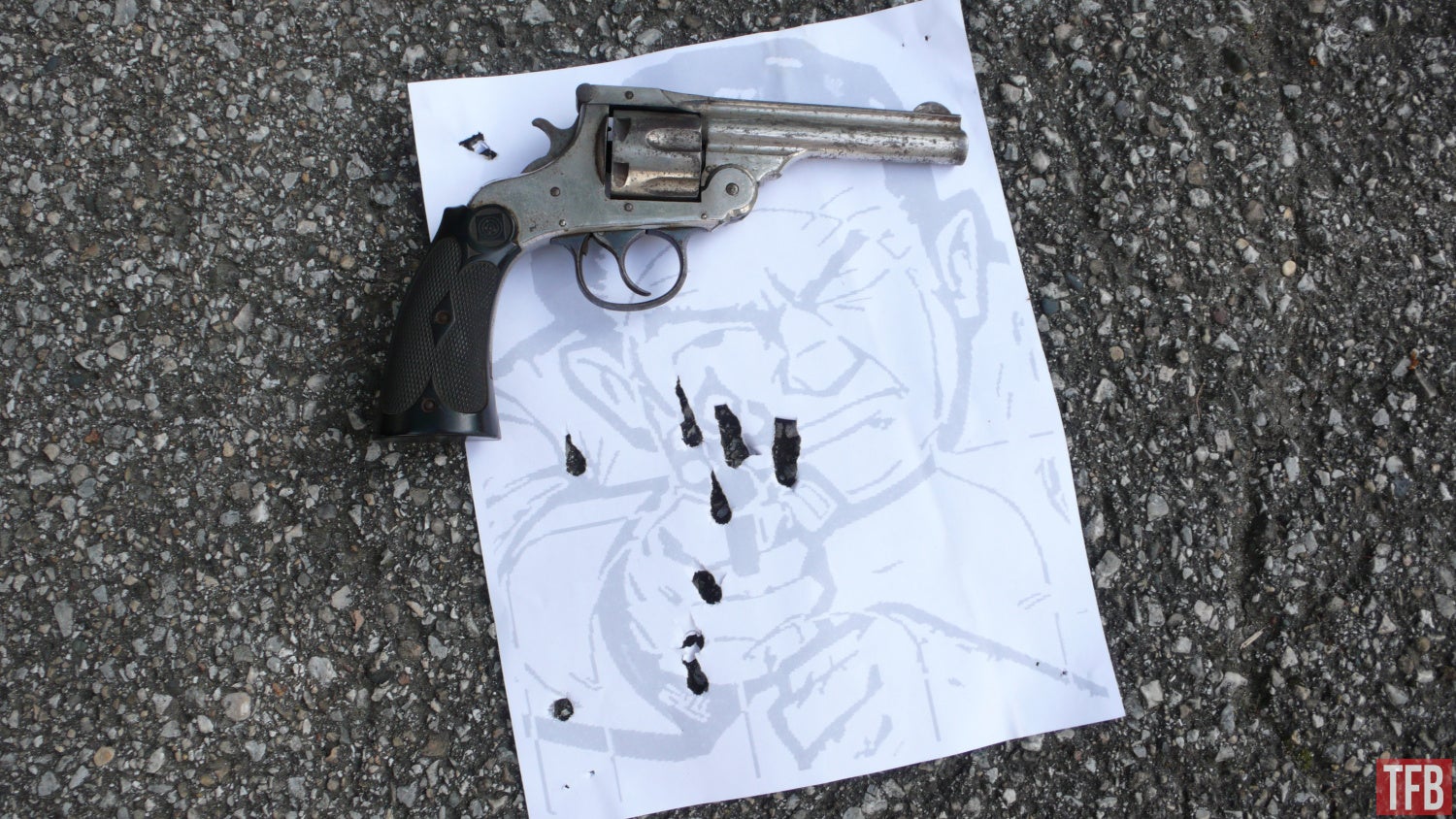
My group at 25 yards. The paper wasn’t stapled flat so it was tearing and the bullets weren’t keyholing.
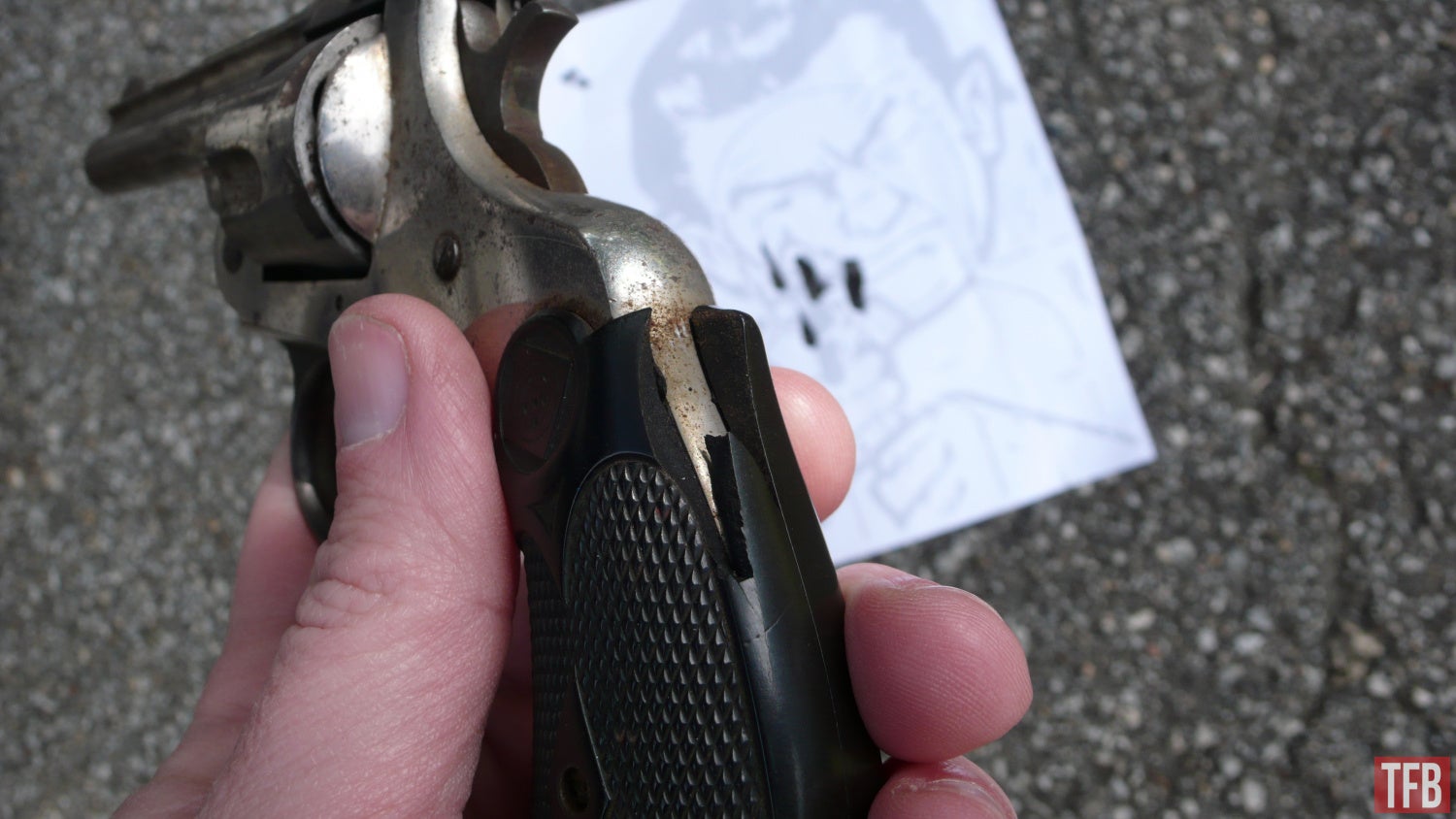
Several of my reference books mention that the grips were hardened rubber, but over the years this set has become a bit brittle. This broken grip wasn’t uncomfortable to shoot however.
CONCLUSIONS
In the end, I was glad I bought this H&R Auto Ejecting Top-Break revolver, even though its design is quite antiquated and ammo is a bit more expensive than I’d like. It’s been a learning experience, and it’s always fun to touch a part of history, and I’m glad I got to share the experience with my kids as well. Due to the affordability of the H&R Auto Ejecting revolvers, I would say that they can be worth the money, but doubly so if you already reload the cartridges they were offered in. I’ve always liked the Enfields and Webleys more from an aesthetic view, as well as appreciating the role those played on the world stage, however the H&Rs can give you a sense of that for a fraction of the cost as it did for me.
What do you think about the old H&R Auto Ejecting revolvers?


